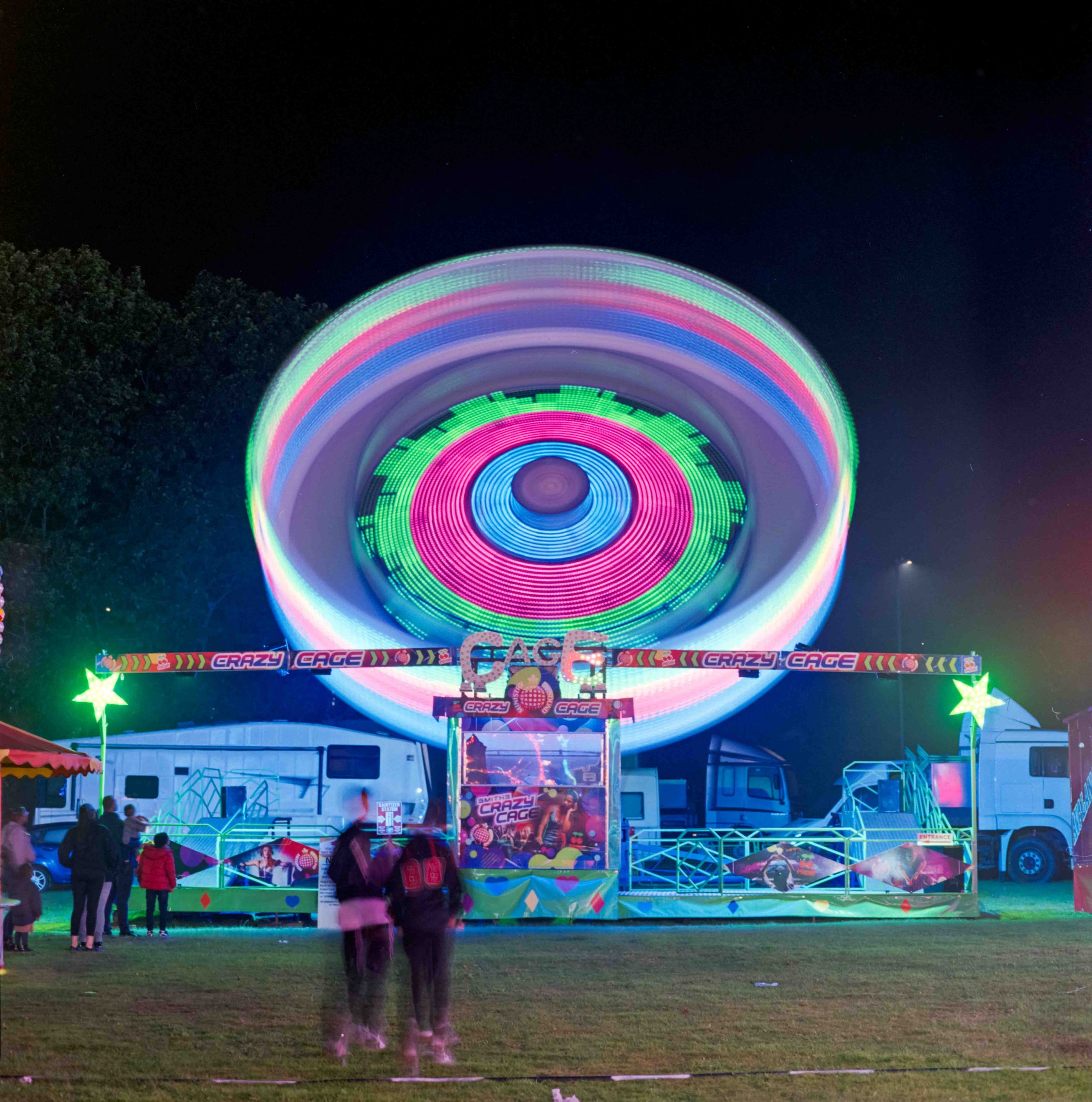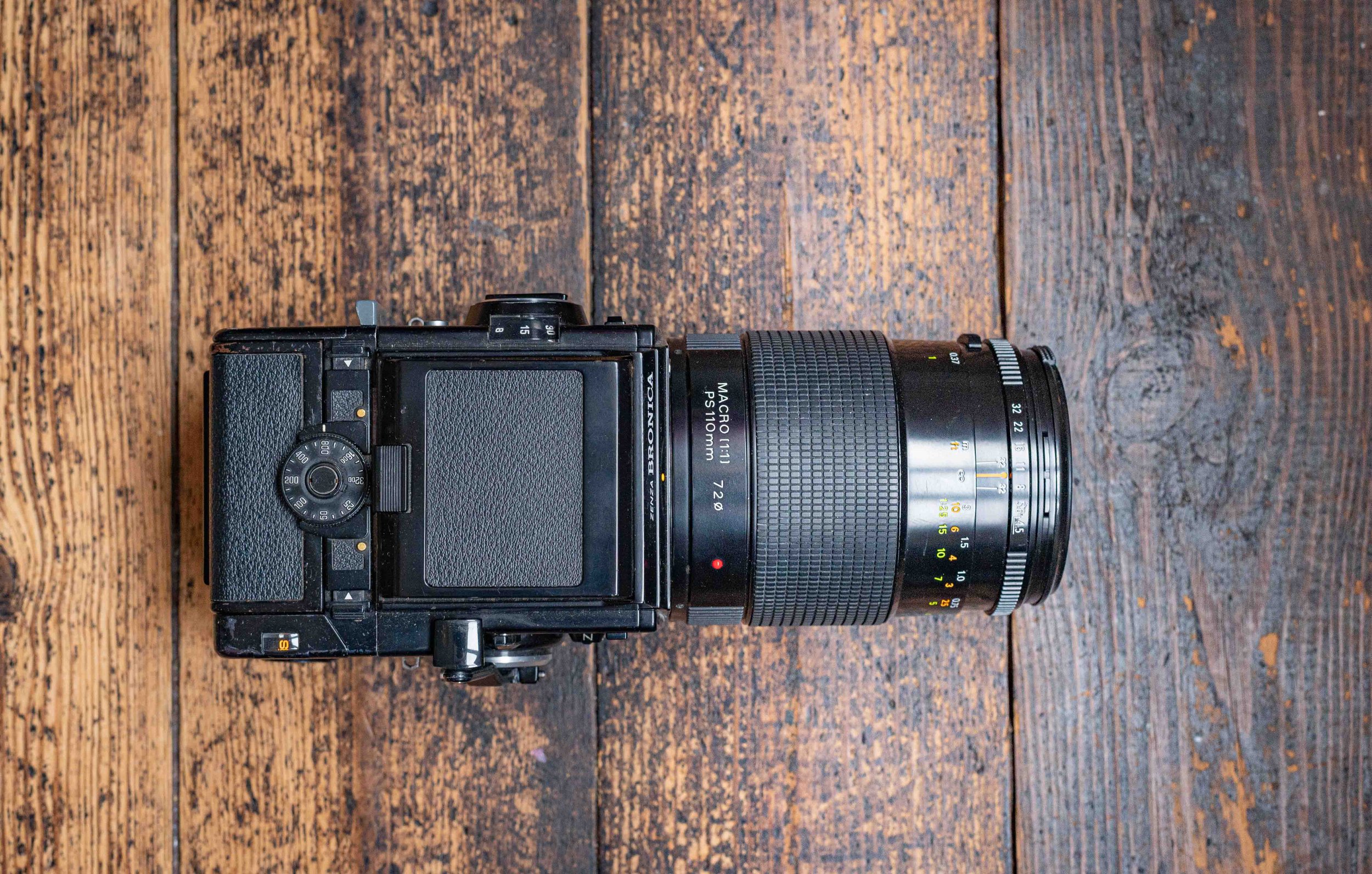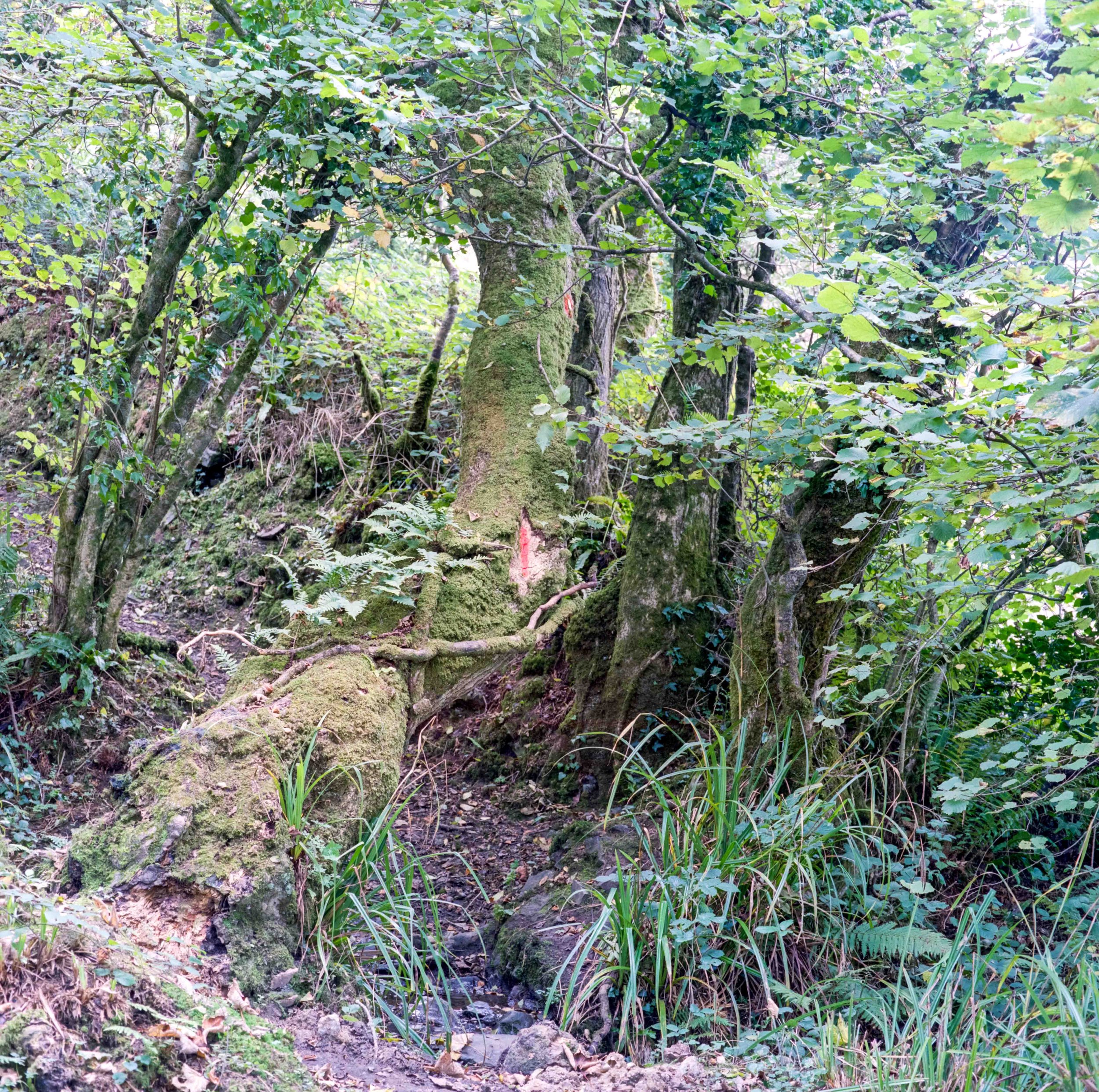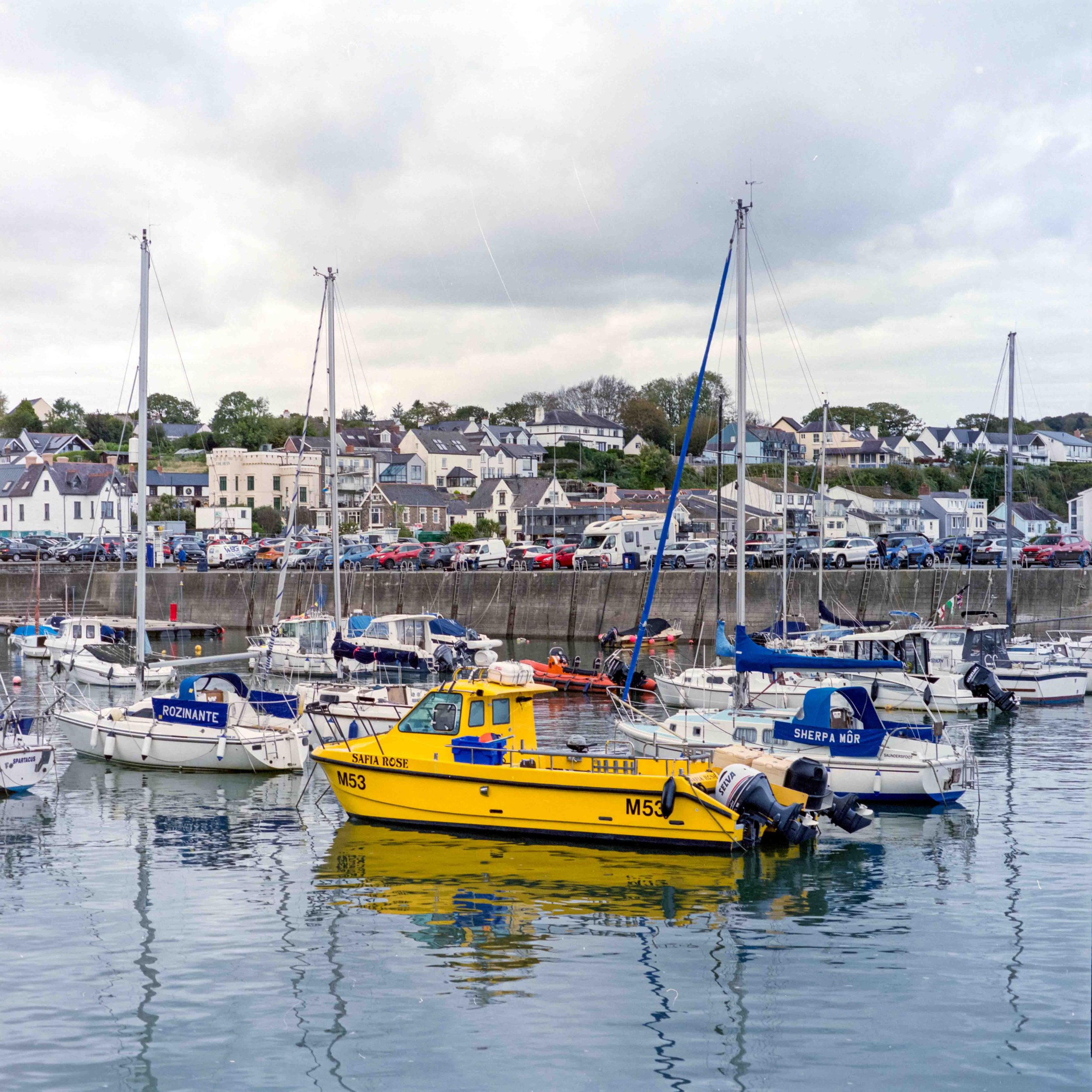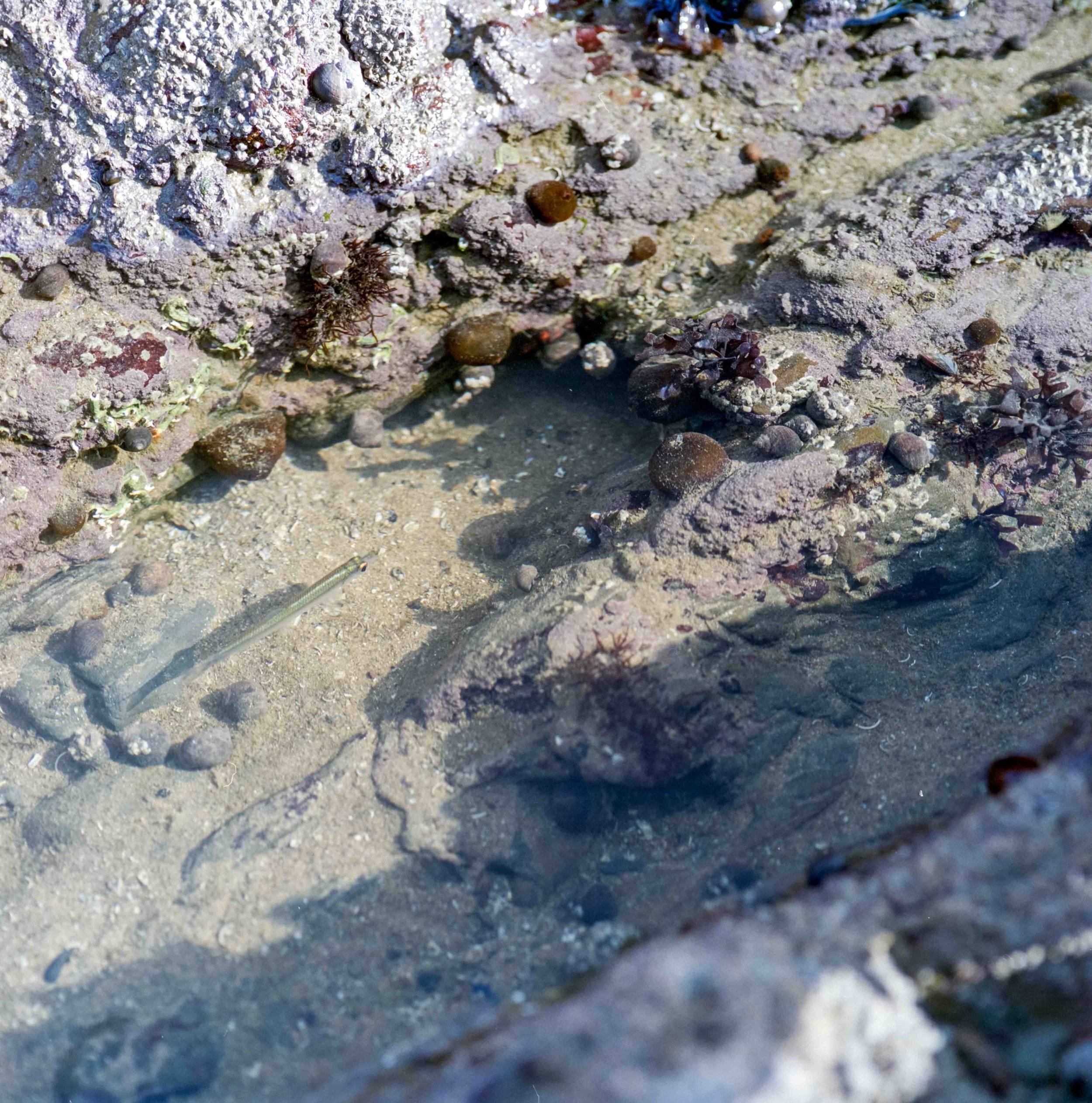Bronica 110mm F4.5 PS Macro Review
This Crazy Cage ride at the local fair demonstrates the vibrant colours that can be achieved even with colour negative film. 2s F8.0 Fuji Pro400H.
One of the things I quickly got frustrated with when taking pictures with my Bronica SQ-A was focusing distances. Neither the 80mm nor 150mm lenses I owned allowed me to get that close to a subject which is why I bought the extension tube I wrote about previously here. Bronica did make a 110mm F4.0 macro lens in both S and PS form, which is the most commonly known about, but these were not true macro lenses. Only producing a reproduction ratio of 1:4 and not a true 1:1 (the latter meaning the subject is produced as large on the film or sensor as it is in real life). However late in the life of the SQ, Bronica released a 110mm F4.5 PS Macro lens that was capable of 1:1 and stands alone as being the only lens ever released in 6x6 medium format (across any manufacturer) to achieve this. Unsurprisingly this makes the lens not only very desirable but also very rare, with little information or sample photos available for those who are curious. Hopefully this blog will shed a bit more light on this unusual item.
The lens fully retracted at infinity focus.
The lens fully extended to its closest focusing point.
A table Dave Thomas put together to calculate the required exposure compensation. The original can be found here.
To test this lens, I shot five rolls of Fuji Pro400H in various different conditions, both macro and non-macro to see how it also stacks up as a general-purpose lens. It does sit nicely in between my 80mm and 150mm lenses and is roughly equivalent to a 60mm macro in full frame (35mm) terms. Though the difference in length between this and 80mm is noticeable I rarely felt overly constrained when using it in similar situations, though it does help being outdoors where you often have more space to move back.
This series of images of a globe thistle demonstrates the bokeh you can achieve at close focusing. The bokeh starts out very smooth and creamy as the background is far away from the subject. 1/500s F5.6 Fuji Pro400H.
Closing the aperture down starts to introduce more of the background. 1/125s F11 Fuji Pro400H.
Going further makes creates a very ugly and distracting background that takes your eye away from the main subject. 1/30s F22 Fuji Pro400H.
A limpet shot wide open, only part of it is in focus. 1/60s F4.5 with 1 stop of exposure compensation Fuji Pro400H.
Even at F13 there are some parts still out of focus but as the background is less busy and closer to the subject it is far less distracting than the photos of the globe thistle. 1/8s F13 with 1 stop of exposure compensation Fuji Pro400H.
The bokeh you can achieve is still decent even when not at close focusing but don’t expect miracles from a short telephoto lens such as this. 1/30s F4.5 Fuji Pro400H.
Immediately when using it I could see how much heavier it is in comparison to the lenses I already had. Typically, the later PS lenses are generally heavier than the older S lenses as they have updated designs, sometimes with more groups and elements, but this was doubly so in order to produce the 1:1 ratio required for true macro. Though I have never held the earlier F4 version in my hand I can see from photos that even the PS version is much smaller. This lens also extended a lot further and when you do focus in to 1:1 the lens protrudes about 50% further than at infinity focus. To compare the two, his has a minimum focusing distance of 37cm as opposed to 66cm for the F4 macro lenses.
Insects can be difficult to photograph as you need to get in very close but this grasshopper proved rather compliant. You can see the shadow of lens protruding into frame. 1/125s F11 Fuji Pro400H.
Not one for arachnophobes but spiders don’t tend to move very much unless you knock their webs. 1/8s F8.0 Fuji Pro400H.
This photo of an Angle Shades moth gives a better idea of the detail you can achieve with this lens. Unfortunately this image is marred by a small light leak (due to the camera not the lens). I did not add any exposure compensation and to my eyes doesn’t look underexposed. 1/4s F16 no compensation exposure Fuji Pro400H.
Originally all Bronica prime lenses were made (with the odd exception for the vary longest and widest) with a 67mm filter thread. This was done for consistency so working professionals didn’t have to carry a huge set of filters. Though this lens is one of the exceptions where, in order to improve the design sufficiently, they had to to a larger 72mm filter thread (as well as the slightly smaller maximum aperture). One thing I have found to be a bit of a nuisance, is that I am struggling to use the focusing aids accurately in my waist-level finder (WLF). I don’t know whether it is because it is an F4.5 lens as opposed to F2.8 or F3.5 which my 80mm and 150mm lenses are respectively, but the lower half of the middle circle is often dark and the surrounding microprisms seem to do very little as well. That has caused me to misfocus at times. Perhaps it is also due to the complex nature of a true macro lenses’ glass elements and groupings. The focusing ring is also much stiffer than my other lenses but then it does have a lot more glass to move. I’m sure I will improve in using it with time, but it can be quite unforgiving.
More sugary colours from the fun fair. 1/4s F8.0 Fuji Pro400H.
At 110mm it is still short enough to use as a general purpose lens in most situations. 1s F8.0 Fuji Pro400H.
Fun at the tombola. 1s F8.0 Fuji Pro400H.
When you do get it right however, the results are spectacular. From what I’ve seen online there is a big difference between the S and PS lenses in terms of colour and sharpness due to improved design as well as better coatings. That was immediately evident here. My 80mm and 150mm S lenses give the typical washed out look that people often think about with film, whereas this lens has much more vibrant colours and contrast. These were the results I’d been trying to achieve with my Bronica since I’d owned it, so I was excited when I saw the converted images on my computer. If these are the results with colour negative film then I am even more excited to see what it is like shooting slide film with its even greater colour & detail. It’s worth mentioning that I do edit my photos slightly so the colours you see are not straight out of the box, but they are not far off.
The bright red autumnal leaves of a Virginia Creeper. 1/2s F11 Fuji Pro400H.
The magenta tones of Fuji Pro400H to come through when you look at the ground but the colours are still very true to life. 1/4s F11 Fuji Pro400H.
This perfect ink cap was very considerate in sprouting amongst a very colourful flower bed. 1/30s F5.6 Fuji Pro400H.
As with other macro lenses and extension tubes it is officially recommended to increase your exposure as you get closer to your subject. However, like with my S-36 Extension tube I didn’t see any problems with not increasing the exposure. Perhaps the latitude of colour negative film is wide enough to get around it and that it may be more of an issue for slide film with its more precise requirements for exposure. Rest assured I will report back my findings on this blog when I have done so.
This photo of a crab leg on the beach is a good example of missed focus, which you can see is on the sand in the foreground and not the subject. You can just about get away with these close-up low down shots with this focal length but it is difficult. 1/4s F8.0 Fuji Pro400H.
A long exposure shot of Monkstone Point in Pembrokeshire. When I arrived I had to wait for the tide to come further in before taking this shot. 1s F32 2xND filters totally 5 stops Fuji Pro400H.
Another good example of this lens’ ability to render fine detail. 1/60s F16 Fuji Pro400H.
A macro shot of a Sea potato, unfortunately this shot also had a light leak but thankfully it didn’t overlap with the subject. 1/60s F16 Fuji Pro400H.
Saundersfoot harbour, another shot where I was really happy with the rendering of the colours and contrast. 1/60s F9.0 with polariser Fuji Pro400H.
Overall, I am thrilled to have been able to own and use one of these lenses. It is one I have been dreaming about for a while and it felt a bit surreal when I first held it in my hands. It’s a lens I will certainly look after and hopefully use for years to come. It’s also got me thinking that I should upgrade my other lenses to their PS versions as well. If you are lucky enough to have this lens in your possession, then I certainly encourage you to make the most of it. If you are looking to buy one then be aware then you may need to be a little patient as they rarely come up for sale, but hopefully you can agree the results will be worth the wait. Especially when this lens can do things that nothing else can in this format.
With a bit of patience I managed to get a sharp shot of this sandeel that had gotten itself stranded in a rockpool. 1/60s F6.3 with polariser Fuji Pro400H.
I also made an unusual discovery in this sea mouse. I was impressed by how well the green and yellow florescent spines came out on film. Weirdly it doesn’t look like it is underwater except for the out of focus areas in the lower left corner. 1/60s F8.0 with polariser Fuji Pro400H.
Empty shells on the shore always make for great macro subjects with their unique and interesting details. 1s F11 Fuji Pro400H.
If you enjoyed this blog then please consider leaving a tip below.
